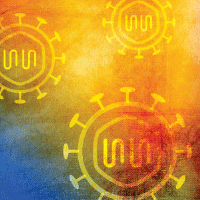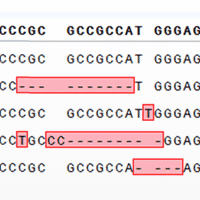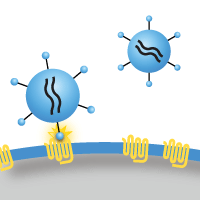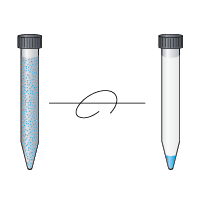632505
pRetroQ-AcGFP1-N1 Vector
20 ug
Inquire for Quotation
*
The pRetroQ-AcGFP1-N1 vector is a high-titer, self-inactivating retroviral expression vector that is optimized to eliminate promoter interference from the upstream LTR in the integrated provirus. This vector expresses a green fluorescent protein (GFP) from Aequorea coerulescens . pRetroQ-AcGFP1-N1 allows cloning of genes into the multiple cloning site (MCS) upstream of the AcGFP1 coding sequence, which are subsequently expressed as fusions to the N-terminus of the AcGFP1 protein. This vector allows the expression of fluorescent fusion proteins in difficult-to-transfect cells. It also contains a puromycin selection marker for selection of stable integrants. The unmodified vector will express AcGFP1 protein and may be used to produce marker virus to optimize infection protocols.
Notice to purchaser
Our products are to be used for Research Use Only . They may not be used for any other purpose, including, but not limited to, use in humans, therapeutic or diagnostic use, or commercial use of any kind. Our products may not be transferred to third parties, resold, modified for resale, or used to manufacture commercial products or to provide a service to third parties without our prior written approval.
632506
pRetroQ-AcGFP1-C1 Vector
20 ug
Inquire for Quotation
*
The pRetroQ-AcGFP1-C1 vector is a high-titer, self-inactivating retroviral expression vector that is optimized to eliminate promoter interference from the upstream LTR in the integrated provirus. This vector expresses a green fluorescent protein (GFP) from Aequorea coerulescens. pRetroQ-AcGFP1-C1 allows cloning of genes into the multiple cloning site (MCS) downstream of the AcGFP1 coding sequence, which are subsequently expressed as fusions to the C-terminus of the AcGFP1 protein. This vector allows the expression of fluorescent fusion proteins in difficult-to-transfect cells. It also contains a puromycin selection marker for selection of stable integrants. The unmodified vector will express AcGFP1 protein and may be used to produce marker virus to optimize infection protocols.
Notice to purchaser
Our products are to be used for Research Use Only . They may not be used for any other purpose, including, but not limited to, use in humans, therapeutic or diagnostic use, or commercial use of any kind. Our products may not be transferred to third parties, resold, modified for resale, or used to manufacture commercial products or to provide a service to third parties without our prior written approval.
632507
pRetroQ-DsRed Monomer-N1 Vector
20 ug
Inquire for Quotation
*
The pRetroQ-DsRed Monomer-N1 vector is a high-titer, self-inactivating retroviral expression vector that is optimized to eliminate promoter interference from the upstream LTR in the integrated provirus. This vector expresses a monomeric mutant of the Discosoma sp. red fluorescent protein (DsRed). pRetroQ-DsRed Monomer-N1 allows cloning of genes into the multiple cloning site (MCS) upstream of the DsRed-Monomer coding sequence, which are subsequently expressed as fusions to the N-terminus of the DsRed-Monomer protein. This vector allows the expression of fluorescent fusion proteins in difficult-to-transfect cells. It also contains a puromycin selection marker for selection of stable integrants. The unmodified vector will express DsRed-Monomer protein and may be used to produce marker virus to optimize infection protocols.
Notice to purchaser
Our products are to be used for Research Use Only . They may not be used for any other purpose, including, but not limited to, use in humans, therapeutic or diagnostic use, or commercial use of any kind. Our products may not be transferred to third parties, resold, modified for resale, or used to manufacture commercial products or to provide a service to third parties without our prior written approval.
632508
pRetroQ-DsRed Monomer-C1 Vector
20 ug
Inquire for Quotation
*
The pRetroQ-DsRed Monomer-C1 vector is a high-titer, self-inactivating retroviral expression vector that is optimized to eliminate promoter interference from the upstream LTR in the integrated provirus. This vector expresses a monomeric mutant of the Discosoma sp. red fluorescent protein (DsRed). pRetroQ-DsRed Monomer-C1 allows cloning of genes into the multiple cloning site (MCS) downstream of the DsRed-Monomer coding sequence, which are subsequently expressed as fusions to the C-terminus of the DsRed-monomer protein. Together, this vector allows the expression of fluorescent fusion proteins in difficult-to-transfect cells. It also contains a puromycin selection marker for selection of stable integrants. The unmodified vector will express DsRed-Monomer protein and may be used to produce marker virus to optimize infection protocols.
Notice to purchaser
Our products are to be used for Research Use Only . They may not be used for any other purpose, including, but not limited to, use in humans, therapeutic or diagnostic use, or commercial use of any kind. Our products may not be transferred to third parties, resold, modified for resale, or used to manufacture commercial products or to provide a service to third parties without our prior written approval.
632520
pRetroX-IRES-ZsGreen1 Vector
20 ug
USD $593.00
The pRetroX-IRES-ZsGreen1 vector is a bicistronic retroviral expression vector containing ZsGreen1 as a marker for transfection/infection efficiency. A gene of interest is inserted into the MCS located upstream of the encephalomyocarditis virus (EMCV) internal ribosomal entry site (IRES). The IRES sequence allows the protein of interest and ZsGreen1 to be independently translated from the same mRNA transcript. ZsGreen1 is a human codon-optimized variant of the Zoanthus sp. green fluorescent protein (ZsGreen) that has been engineered for brighter fluorescence and higher expression in mammalian cells.
Notice to purchaser
Our products are to be used for Research Use Only . They may not be used for any other purpose, including, but not limited to, use in humans, therapeutic or diagnostic use, or commercial use of any kind. Our products may not be transferred to third parties, resold, modified for resale, or used to manufacture commercial products or to provide a service to third parties without our prior written approval.
632521
pRetroX-IRES-DsredExpress Vector
20 ug
Inquire for Quotation
*
The pRetroX-IRES-DsRedExpress vector is a bicistronic retroviral expression vector containing DsRed-Express as a marker for transfection/infection efficiency. A gene of interest is inserted into the MCS located upstream of the encephalomyocarditis virus (EMCV) internal ribosomal entry site (IRES). The IRES sequence allows the protein of interest and DsRed-Express to be independently translated from the same mRNA transcript. DsRed-Express is a human codon-optimized variant of the Discosoma sp. red fluorescent protein (DsRed) that has been engineered for faster maturation.
Notice to purchaser
Our products are to be used for Research Use Only . They may not be used for any other purpose, including, but not limited to, use in humans, therapeutic or diagnostic use, or commercial use of any kind. Our products may not be transferred to third parties, resold, modified for resale, or used to manufacture commercial products or to provide a service to third parties without our prior written approval.
632568
pRetroQ-mCherry-N1 Vector
10 ug
Inquire for Quotation
*
The pRetroQ-mCherry-N1 Vector is a high-titer, self-inactivating retroviral expression vector designed to eliminate promoter interference from the upstream LTR in the integrated provirus. The vector encodes mCherry; a bright red fluorescent protein tag that was derived from a monomeric mutant of DsRed (mRFP1) by site-directed mutagenesis. Inserting a cDNA in the MCS upstream of the mCherry coding sequence joins your protein of interest to the N-terminus of the tag, and allows the fusion protein to be tracked and studied in transduced cells. To package the vector into high-titer, replication-incompetent retrovirus, we recommend using the Retro-X Universal Packaging System (Cat. No. 631530).
Notice to purchaser
Our products are to be used for Research Use Only . They may not be used for any other purpose, including, but not limited to, use in humans, therapeutic or diagnostic use, or commercial use of any kind. Our products may not be transferred to third parties, resold, modified for resale, or used to manufacture commercial products or to provide a service to third parties without our prior written approval.
632567
pRetroQ-mCherry-C1 Vector
10 ug
Inquire for Quotation
*
The pRetroQ-mCherry-C1 Vector is a high-titer, self-inactivating retroviral expression vector designed to eliminate promoter interference from the upstream LTR in the integrated provirus. The vector encodes mCherry; a bright red fluorescent protein tag that was derived from a monomeric mutant of DsRed (mRFP1) by site-directed mutagenesis. Inserting a cDNA in the MCS downstream of the mCherry coding sequence joins your protein of interest to the C-terminus of the tag, and allows the fusion protein to be tracked and studied in transduced cells. To package the vector into high-titer, replication-incompetent retrovirus, we recommend using the Retro-X Universal Packaging System (Cat. No. 631530).
Notice to purchaser
Our products are to be used for Research Use Only . They may not be used for any other purpose, including, but not limited to, use in humans, therapeutic or diagnostic use, or commercial use of any kind. Our products may not be transferred to third parties, resold, modified for resale, or used to manufacture commercial products or to provide a service to third parties without our prior written approval.








